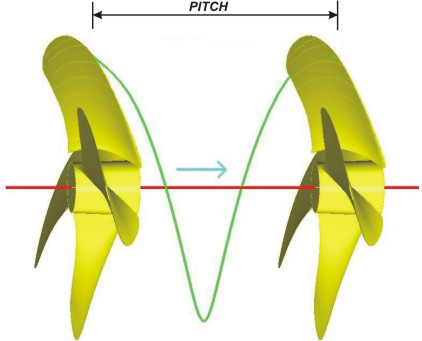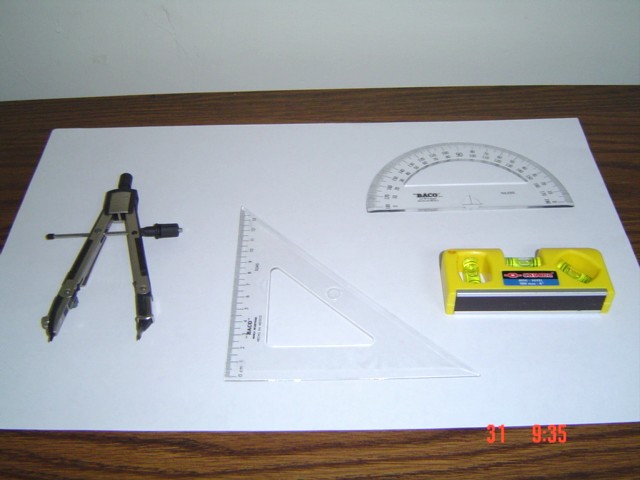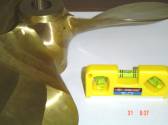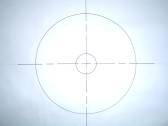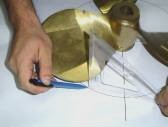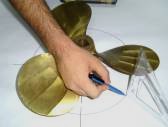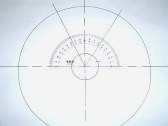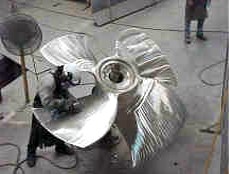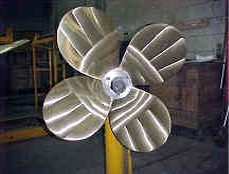The Marine Engineering Training in India had its formal beginning in 1927 on board the Training Ship 'T.S. Dufferin" which provided facilities for training both of nautical and engineering merchant navy personnel. The main consideration, when this Training Ship was inaugurated, was mainly to inculcate sea-sense in cadets.
With the country obtaining Independence in 1947, it was realized that the newly independent vast country was in need of a large Merchant Navy. At the same time vast technological changes brought in by the gigantic war efforts of the developed countries during World War II, also showed inadequacy of the training systems. As a result, on the recommendation of
Merchant Navy Officers Training Committee', constituted in 1947, by Govt. of India, immediately after independence, the function of pre-sea training of Marine Engineers was transferred to 'Directorate of Marine Engineering Training' from the year 1949 with its headquarters in Kolkata and a branch at Mumbai.
Marine Engg. Training at MERI, Kolkata has undergone several changes in 70 - decade.
In 1977 / 78, an expert committee nominated by Govt. of India, headed by Prof. Shankarlal recommended certain reorientation in
-
Course curriculum
-
Class contact hours
-
Practical Training / Pattern.
(MHRD accorded approval to graduation certificate issued by the Institution as equivalent to First degree in Marine Engg. with effect from 1982-entry for the purpose of recruitment to the Senior posts and services under Central Govt.)
(The Graduation certificate issued by the Institution also got recognition of The Institution of Engineers (India) as an exempting qualification from their A & B examinations from 1982 onwards.
*Further the course has also got the approval of AICTE.
*In order to meet the IMO requirements for Marine Engineers working on board the ship the training curriculum in this Institute has also been oriented to cover the STCW 95 convention.
*For Quality accreditation the 'System Manual' and the 'Procedure Manual' have already been prepared and the Institute is in the process of getting ISO-9000 certification.

LAND AREA
33 acres (approx.) at P-19, Taratala Road, Kolkata 700 088.
CLASS ROOMS
4 Nos. which can accommodate 120 cadets & 10 Nos. which can accommodate 40 cadets.
LABORATORY
State of the art laboratories _ Mechanical Lab., Hydraulic Lab., Heat Lab., Electronic Lab., Electrical Lab., Control Lab., Boiler Lab., Computer Lab., Marpol Lab., Fire Fighting Lab., Simulation Lab., Seamanship Lab.
LIBRARY
Facility of full fledged technical library comparable to the very best in the country is available to the candidates in the training center and services available in terms of books, journals, videos and periodicals etc.
WORKSHOP
Fully equipped in-house workshop having Test Rig and working models of ship's machinery and component parts.
HOSTEL
Residence in the hostel is compulsory. Final year cadets are given single seated rooms while junior cadets share accommodation in the hostels. All cadets are required to be members of the joint mess run by the cadets which is subsidised by Grant-in-Aid from the Govt. A cooperative store is run by the cadets for their benefits. All cadets are required to be members of the cooperative store.
UNIFORM
Cadets must wear uniform throughout their period of training. At the commencement of training, articles of uniform as per printed "list of uniform" of this Directorate are to be purchased by the cadet.
DISCIPLINE
High standard of paramilitary type of discipline is maintained in this Institution. All cadets must carefully read and understand the standing orders, rules and regulations etc. and abide by them at all times. The Director reserves the right to impose on a cadet punishment including fine, suspension and dismissal from the training in the event of any breach of discipline.
SCHOLARSHIP
A number of scholarships both on merit and financial conditions of the parents are available to the cadets of MERI.
DEPOSIT
Personal accounts are opened in the name of each cadet at the time of joining the course and are operated throughout his period of training of four years. Yearly statements will be
given to the cadets.
FEES & OTHER EXPENSES
FOR INDIAN CADETS :
Quarterly hostel rent, tuition fees, mess estt. charges etc.
(@Rs. 700/- per month for general cadets and @Rs. 600/- per month
for SC/ST cadets ).
For General cadets - Rs. 2100/- (quarterly).
For SC/ST cadets - Rs. 1800/- (quarterly).
Mess charges (Rs. 1000/- p.m.) for all cadets Rs. 3000/- (quarterly).
Caution money ( one time ) for all cadets Rs. 500/-
Medical & Sports charge ( Rs. 100/- per month) for all cadets
Rs. 300/- (quarterly).
Computer / Internet System charges (Rs. 150/- p.m.) for all cadets
Rs. 450/- (quarterly).
Upkeepment of hostel / hygiene (Rs. 30/- p.m.) for all cadets
Rs. 90/- (quarterly).
FOR FOREIGN CADETS :
Mess estt. and tuition fees etc. U.S. $4000 per annum.
Medical, Sports Charge, Caution U.S. $300 per annum.
money etc.
Mess charges (variable) Same as applicable to Indian cadets.
ENTRY STANDARDS
1. The maximum at entry level :
(I) For general category candidates not to exceed 20 years.
(II) For SC/ST category candidates not to exceed 25 years.
2.The educational standards for entry to this course is a pass in 10+2 school level with Physics, Chemistry and Mathematics and qualify through Joint Entrance Examination conducted by Indian Institute of Technology all over India followed by counseling.
3.Qualified candidates are required to produce a detailed medical report of self from a qualified body during counseling. An appropriate medical board also checks the eye sight in particular and all other aspects in general at the same time. Only successful candidates through both these tests are eligible for admission.
DURATION OF COURSE :
The training curriculum is conducted in eight semesters spread over four years and makes adequate coverage as per International Marine Organizations requirements / regulations.
The course also includes in-depth coverage of various allied engineering topics e.g. Mechanics of Machines, Mechanics of Materials, Advanced Mathematics, Advanced Computer Science, Electronics, Fluid Mechanics etc. so that a passed candidate has adequate reserve to pursue the development and research work in his chosen area, if he so desires.
Extensive further training is given in Physical Exercise, Parade, Housekeeping, Swimming and Outdoor games, under daily routine in order to ensure that every trainee acquires the mental, moral and physical attributes essential for development as Marine Engineer. Every trainee will be issued a Training and Assessment Record Book (TAR) and he is responsible for upkeep and security of the book.
On successful completion of this training program, assessment and examination by the administration, trainees should be competent to carry out safely the watch keeping duties of an engineer officer on board a ship and be fully conversant with the maintenance and operation of machinery and equipment fitted on board a ship.
Campus interview is held every year by different Shipping Companies and all the cadets are absorbed in different Indian and foreign shipping companies. Successful Marine Engineers from this Institute have been manning the ships holding the life line of economy not only of India, but also of many foreign countries.
Contact Person
Shri S.Mukhopadhya, Director
Marine Engineering and Research Institute,
P-19, New Taratalla Road,
Kolkatta - 700 088
Tel No: 033-4014794/76
Fax No:033-4014333
E-Mail:director@merical.ac.in
Web Site : www.merical.ac.in
 The Shipping Corporation of India Ltd (SCI) was formed on 2nd October 1961. The present authorised capital of the Company is Rs. 450 crore and paid up capital is Rs 282.30 crore. The status of SCI has been changed from a private limited company to Public limited from 18 September 1992. The SCI was conferred 'Mini Ratna' status by the Government of India on 24 Feburary 2000. At present, the Government is holding 80.12 per cent of share capital and the balance is held by financial institutions, public and others (NRIs, Corporate Bodies, etc.). SCI signed Memorandum of Understanding with the Ministry of Shipping, Road Transport & Highways, Government of India on 27 March 2008.
The Shipping Corporation of India Ltd (SCI) was formed on 2nd October 1961. The present authorised capital of the Company is Rs. 450 crore and paid up capital is Rs 282.30 crore. The status of SCI has been changed from a private limited company to Public limited from 18 September 1992. The SCI was conferred 'Mini Ratna' status by the Government of India on 24 Feburary 2000. At present, the Government is holding 80.12 per cent of share capital and the balance is held by financial institutions, public and others (NRIs, Corporate Bodies, etc.). SCI signed Memorandum of Understanding with the Ministry of Shipping, Road Transport & Highways, Government of India on 27 March 2008.  Situated in the Western coast of India in the city Cochin, State of Kerla, Cochin Shipyard is the largest shipyard in the country. Incorporated in the year 1972, Cochin Shipyard can build ships upto 1,10,000 DWT and repair ships upto 1,25,000 DWT. The year has built varied types of ships including tankers, bulk carriers, ports crafts, offshore vessels and passenger vessels. The orders executed by CSL in recent past include carriers for M/s Clipper Group, Bahamas, firefighting tugs for M/s ATCO, Saudi Arabia and Platform Supply Vessels for M/s Deep Sea Supplies, Norway.
Situated in the Western coast of India in the city Cochin, State of Kerla, Cochin Shipyard is the largest shipyard in the country. Incorporated in the year 1972, Cochin Shipyard can build ships upto 1,10,000 DWT and repair ships upto 1,25,000 DWT. The year has built varied types of ships including tankers, bulk carriers, ports crafts, offshore vessels and passenger vessels. The orders executed by CSL in recent past include carriers for M/s Clipper Group, Bahamas, firefighting tugs for M/s ATCO, Saudi Arabia and Platform Supply Vessels for M/s Deep Sea Supplies, Norway. The Garden Reach Shipbuilders & Engineers Limited was incorporated as a joint stock company in 1934, under the name M/s Garden Reach Worskhop Limited (GRW). The Government of India acquired the company in 1960. It was renamed as "Garden Reach Shipbuilders & Engineers Limited (GRSE)" on 01 January 1977.
The Garden Reach Shipbuilders & Engineers Limited was incorporated as a joint stock company in 1934, under the name M/s Garden Reach Worskhop Limited (GRW). The Government of India acquired the company in 1960. It was renamed as "Garden Reach Shipbuilders & Engineers Limited (GRSE)" on 01 January 1977. Hindustan Shipyard Limited (HSL), Visakhapatnam as set up in 1941 in the private sector and was taken over by the Government in 1952. In 1962, the shipyard became a central public sector enterprise. The shipbuilding capacity of the yard is 3.5 pioneer class vessels of 21,500 DWT each. The maximum size of vessel that could be built is 50,000 DWT.
Hindustan Shipyard Limited (HSL), Visakhapatnam as set up in 1941 in the private sector and was taken over by the Government in 1952. In 1962, the shipyard became a central public sector enterprise. The shipbuilding capacity of the yard is 3.5 pioneer class vessels of 21,500 DWT each. The maximum size of vessel that could be built is 50,000 DWT. Hooghly Dock and Port Engineers Limited (HDPEL), Kolkata became a Central Publi Sector Undertaking in 1984. The company has two working units in Howrah District of West Bengal, one at Salkia and another at Nazirgunge. The installed capacity in shipbuilding is 1,100 tonnes per annum and in ship repairs 125 ships per annum. Apart from a dry dock and a jetty, it has six shipways. The yard is capable of constructing various types of ships (including passenger ships) and other vessels such as dredgers, tugs, floating dry docks, fishing trawlers, supply-cum-support vessels, multi-purpose harbour vessels, lighhouse tender vessels, barges, mooring launches, etc., and undertaking repairs of different types of vessels.
Hooghly Dock and Port Engineers Limited (HDPEL), Kolkata became a Central Publi Sector Undertaking in 1984. The company has two working units in Howrah District of West Bengal, one at Salkia and another at Nazirgunge. The installed capacity in shipbuilding is 1,100 tonnes per annum and in ship repairs 125 ships per annum. Apart from a dry dock and a jetty, it has six shipways. The yard is capable of constructing various types of ships (including passenger ships) and other vessels such as dredgers, tugs, floating dry docks, fishing trawlers, supply-cum-support vessels, multi-purpose harbour vessels, lighhouse tender vessels, barges, mooring launches, etc., and undertaking repairs of different types of vessels. 